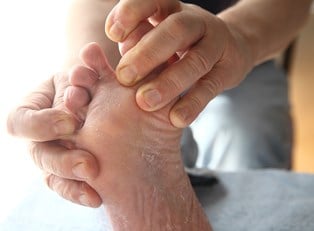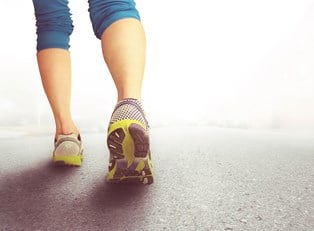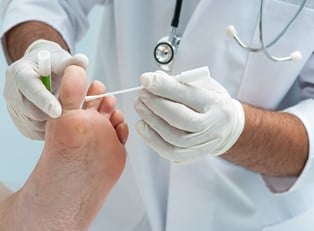Athlete's foot, the common term for a condition known as tinea pedis , is a very common fungal infection that affects the skin in-between the toes and the soles of the feet. Since this condition can often resemble a rash or dry skin, it is important to be able to recognize the symptoms, especially because it is highly contagious.
Common Symptoms
Common signs and symptoms of athlete’s foot include:
- Various degrees of itching and burning
- Dry, flaky skin
- Redness
- Skin peeling
- Cracking, pain, and bleeding in severe cases
- On rare occasions, blistering
Athlete’s foot can range in severity. Some cases only present as slightly dry and flaky skin on the soles of the feet. However, other cases can be so severe that it produces blisters on the feet and between the toes.
Because this fungal infection is so contagious, it is also common to spread it to other parts of your own body. It is most common to present athlete’s foot on both feet and on one hand, since scratching the rash on your feet makes it easy to transfer it to your hands. Athlete’s foot is also commonly seen with jock itch, or ringworm of the groin, especially in men. The fungus has also been known to spread to your toenails, a place that tends to be more resistant to treatment.
If your athlete’s foot rash is accompanied by excessive redness, swelling, drainage, or fever, these symptoms are not normal. You should seek medical attention as soon as possible.
Diagnosis
A doctor is generally able to recognize athlete's foot simply by looking at it. However, there are things that can confirm the diagnosis and rule out other conditions that might be causing the rash, peeling, and/or blisters. For example, your doctor might take some skin samples from the infected area to look closer with a microscope or send them off to a lab for testing. It is important for your doctor to identify the exact cause of your symptoms in order to prescribe the proper treatment. This can be difficult since many of the symptoms of athlete’s foot are similar to other skin conditions.
Prevention
Prevent athlete’s foot by taking simple precautions such as changing your socks regularly, giving your feet time to air out every day, choosing light-weight, well-ventilated shoes, and wearing protective footwear when in public places. Apply antifungal powder to you feet every day to treat the problem before it exists.



